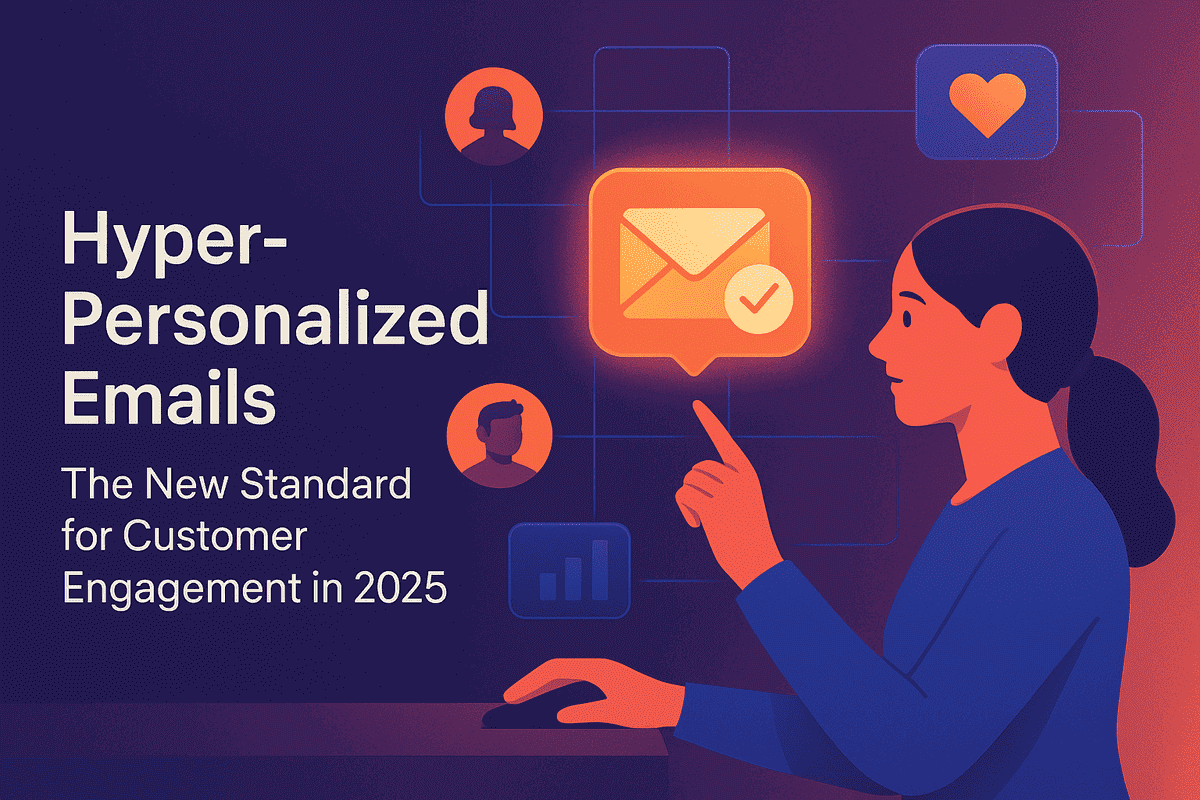"People ignore design that ignores people." – Frank Chimero
Just imagine this: You log in to your inbox and find a subject line that not only has your name but also gives you a discount on something you were just looking at. That's not chance—that's hyper-personalization.
In 2025, generic email blasts are a thing of the past. Customers expect brands to know them—not only their name, but their behaviors, needs, and timing.
Hyper-personalization is no longer a privilege for large brands. It's the new engagement currency for small and medium-sized enterprises (SMBs). And if you're not taking advantage of it already, you're already behind.
What Are Hyper-Personalized Emails?
Hyper-personalized emails are much more advanced than adding a first name to the greeting. These emails are dynamically constructed based on:
- Real-time user actions (e.g., website clicks, previous purchases)
- Demographic information (e.g., location, age)
- Psychographics (e.g., interests, lifestyle)
- Intent indications (i.e.g., cart abandonment, browsing, etc.)
These messages come across as more personal, one-to-one communications than mass marketing attempts.
Why Hyper-Personalization Matters Most to SMBs in 2025
Still blasting the same email to all subscribers? Here's what you're missing out on:
- 43% more opens from non-personalized emails
- 2.5 times more ROI on campaigns with personalized content
- Increased brand loyalty from customers who feel "understood"
Hyper-personalization isn't just about improved emails—it's about relationship-building at scale.
How to Build Hyper-Personalized Email Campaigns: Step-by-Step
Get Real-Time Data
Track user behavior across channels—website, social media, product usage.
Segment Precisely
Group your customers by intent, interest, location, or lifecycle stage.
Use Dynamic Content Blocks
Inject personalized blocks of content into emails like:
- Product suggestions
- Cart reminders
- Local promotions
Utilize Predictive Triggers
Trigger emails automatically based on behavioral signals—birthday, first purchase, inactivity timeline, etc.
A/B Test with Intent
Compare custom vs. generic subject lines, CTAs, or imagery to drive conversion.
Hyper-Personalization Best Practices for Writing Emails
- Utilize first-party data (don't use outdated third-party cookies)
- Make subject lines brief, concise, and targeted to recipient behavior
- Personalize early in the email (above fold)
- Optimize for mobile first—majority of emails opened on mobile devices
- Always include an easy opt-out to prevent user fatigue
Mistakes to Steer Clear of When Email Personalization
- Overusing names poorly
- Sending too many unnecessary emails
- Forgetting time zones or contact windows of choice
- Not refreshing content in accordance with user's changing tastes
- Employing stale or wrong information (nothing is more impersonal)
Tools That Power Hyper-Personalization
The following are the top platforms that SMBs can use in 2025:
Suitable for behavior-driven automation
Triggered email in real-time and personalization
Intelligent segmenting and predictive analytics
Journey builder with integration to CRM
All-in-one platform with enhanced personalization capabilities
Predictions: The Future of Personalized Email Marketing
- AI will create full hyper-personalized journeys
- Real-time send time optimization will be the new norm
- Behavioral psychology will influence campaign design
- Voice-based personalization in email previews
- Hyper-personalized re-engagement flows through AI
FAQs
How is hyper-personalization different from standard personalization?
Hyper-personalization employs behavioral and real-time data, not merely name tokens, so that each email feels truly customized.
Are hyper-personalized emails appropriate for small businesses?
Yes. With low-cost tools and automation, SMBs can now keep pace with enterprise-level personalization.
What do I start with for email personalization?
Start with list segmentation and subject line personalization and scale up to behavior-based campaigns.
Is there a danger of over-personalization?
Too much looks creepy or invasive. Apply only consent-based, relevant data to establish trust.
Will AI render email marketers obsolete?
Not supplant—but augment. AI manages timing and data, while human marketers create inspiring stories and plans.
Conclusion: Your New Engagement Benchmark
In 2025, hyper-personalization is no longer a choice—it's the norm. When attention spans are decreasing and inboxes are bursting, only the most emotionally intelligent, relevant, and timely emails will cut through.
SMBs who embrace hyper-personalized tactics today are positioning themselves for long-term brand loyalty, increased ROI, and genuine customer relationships.
Are you ready to make every email matter?

